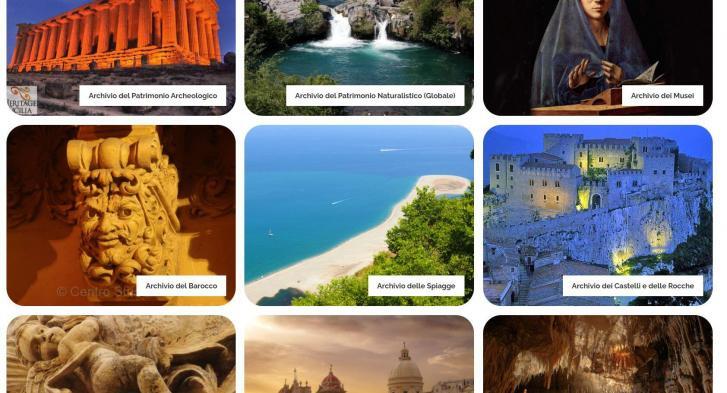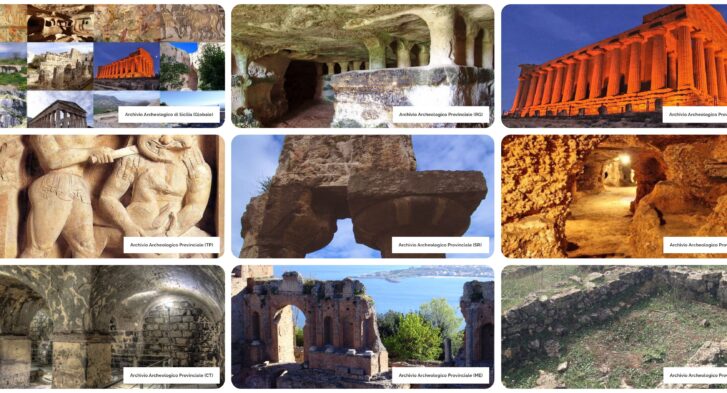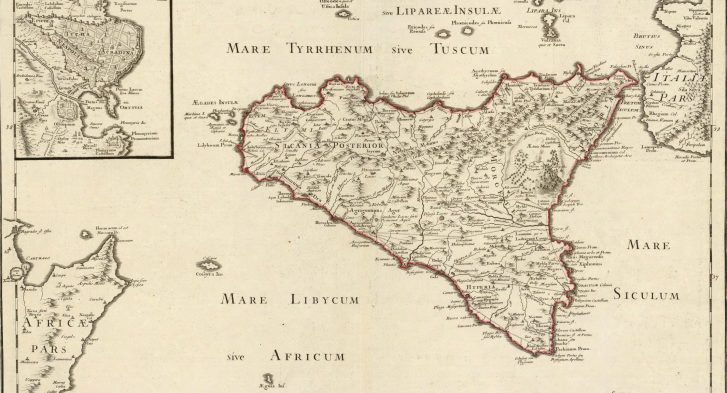Ibla
by Ignazio Caloggero
Reference page: Repertory of Cults and Myths
Origins of the Myth
Il Solarino [The County Of Modica Vol. I. p. 77] suggests that, in the period of the Sicani and Siculi, there must have existed many sanctuaries consecrated to the cult of the goddess Ibla and that, around some of them, inhabited centers later gathered. In reality it must be said that there is no reliable information on the cult of a deity named Ibla. Di Blasi [History of the kingdom of Sicily. vol. i.p. 62], quoting the historian Pausanias, writes that in Ibla Galeote there was a temple dedicated to the goddess Ibla, venerated by a corporation of priests, soothsayers and experts in interpreting dreams. These priests were nicknamed "Galeots".
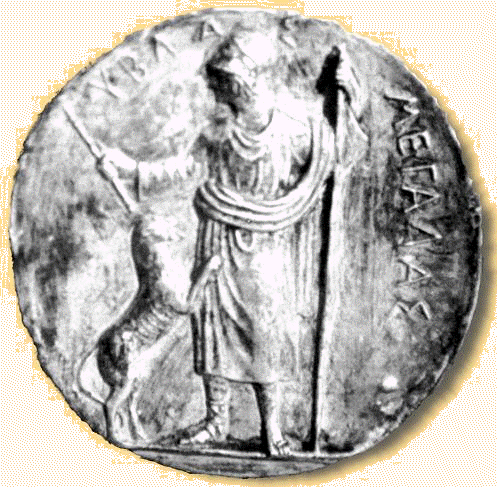
A coin conserved in the monastery of the Cassinesi fathers in Catania shows on one side a veiled woman with an ornament around her neck (believed to be the Ibla goddess), behind whom is a bee, and on the other a woman leaning on a pole with a vase in hand, a dog at his feet and the inscription ΥΒΛΛΣ ΜΕΓΑΛΑΣ
Instead, we have news of various localities or cities with a similar name, even if this does not mean that there is a relationship between these places and the cult of the goddess Ibla. Stefano Bizantino and Claudiano speak of an Italian Ibla different from the Sicilian ones. The Germans had a deity named Iludona or Ibladana, guardian of the hearths (this Germanic deity was also known by the name of Hludana or Hluthena and was also venerated by the Roman legionaries stationed in Germany) [A. Morelli: Gods and myths pag. 272]; among the Gauls there was the goddess Isbel, also called Belisana or Belinuccia. An Irish locality inhabited by the Celts was called Ibla or Iblana and a very famous Ebla existed in Syria even before in Sicily we could speak of Sicani and Siculi.
Writers of the past have never hypothesized links between the cult of the goddess Ibla and the city of Ebla in Syria, due to the fact that the final location of Ebla took place only recently, in 1968 by the archaeologist Paolo Matthiae and that the excavations in this place they are not yet completed.
The first settlements in the Syrian Ebla date back to 3000/3500 BC and towards 2600 BC Ebla covered an important political and commercial role. It was destroyed for the first time around 2300/2200 BC and, after a phase of regrowth, it was destroyed again in 1600 BC After the last destruction, the city was almost completely abandoned, losing even its inhabitants over the course of a few centuries .
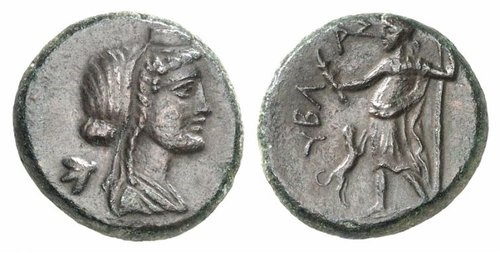
Another Ibla coin similar to the previous one of uncertain origin (web)
It is probable that, among the peoples who arrived in Sicily in the second millennium BC, there were groups coming from the powerful Ebla following one of the destructions referred to above. It is also conceivable that some of these groups, once they arrived at their destination, somehow wanted to preserve a memory of their powerful homeland, giving rise to the cult of a divinity with the same name, later transformed into Ibla.
In ancient times it was not uncommon to personify one's hometown. In Rome, for example, there was a temple built by Augustus in honor of the goddess Roma, personification and apotheosis of the city of Rome itself [EWStoll: Manual of religions and mythology of the Greeks and Romans. p. 315].
One could also think that the divinity whose name was later transformed into Ibla, was actually worshiped by the people who emigrated to our island.
One of the hypotheses, which would justify the loss of traces of the existence of this goddess could depend on the fact that Ibla was a telluric deity, therefore linked to the aspects of nature as was Demeter. The affinity between the cult of Ibla and that of Demeter would later merge the cult of Ibla into that of Demeter. Another hypothesis connects the cult of Ibla with that of Aphrodite, protector of fertility as well as of beauty.
The fact that Ibla has been associated now with Demeter, now with Aphrodite, may not be accidental; in fact, a divinity which, due to her characteristics, seems to have given rise to the divinities of Demeter and Aphrodite, is the Assyro-Babylonian goddess Isthar (which in turn seems to have its origins in the Sumerian goddess of love Innana). This goddess is, at the same time, goddess of love and fertility, but she is also a warrior deity. Just as the god of the underworld kidnaps Demeter's daughter, her death kidnaps Isthar's son-lover, forcing her to go to the underworld to get her beloved back. Even the Babylonians, in honor of Isthar, performed a rite similar to that performed in the Eleusinian festivals in honor of Demeter: the public sexual rite between the priestess and the king. There are also elements that link Isthar to Aphrodite: the sacred prostitution of the priestesses and the dove, sacred to both divinities. Perhaps, it is not even a coincidence that the major sanctuary of the city of Ebla was dedicated to Isthar, as the discovery of a bust of a votive statue that the prince of Ebla, Ibbit-Lim dedicated to this goddess would suggest [Paolo Matthiae: Discoveries of oriental archeology p. 38].
Actually, analyzing the aspects that characterize the cults of the Sicilian Ibla, of Demeter, of Venus Ericina, of the Carthaginian Tanit, of the phoenix Astarte, of the Assyro-Babylonian goddess Isthar, of the Sumerian Innana, of the Egyptian Isis and in general of all the " great mothers", it is difficult not to think of all these divinities as a kind of great "syncretic river" which, starting from a single mountain located at the top of the world (the great mother), flows over the whole planet, changing its name to function of time and place and adapting to the psychology of the people who have the good fortune to live on its shores.
Extract from the Book ” Cults of Ancient Sicily” by Ignazio Caloggero ISBN: 9788832060102 © 2022 Centro Studi Helios srl



